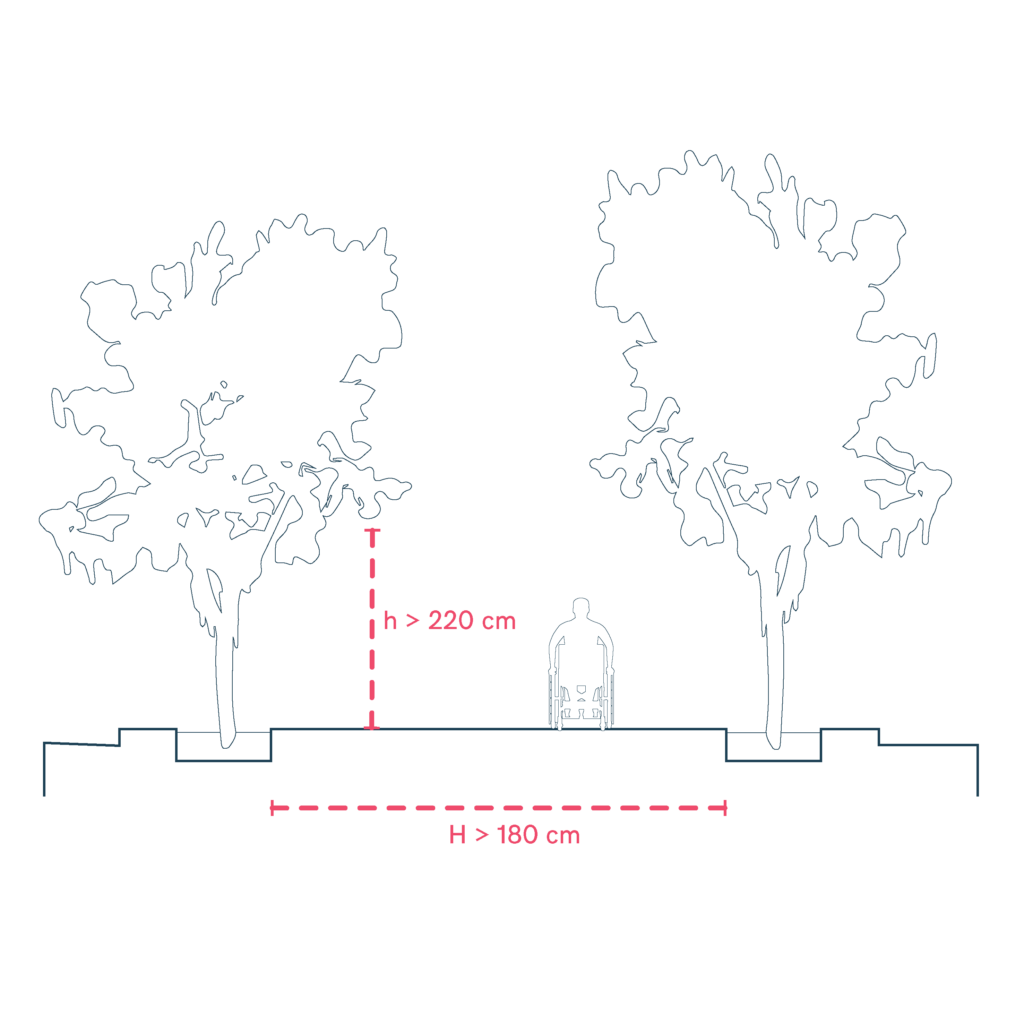General Conditions for Urban Furniture
Installing urban furniture without interrupting pedestrian traffic or compromising the safety of users helps keep pathways clear and reduces the likelihood of accidents. By adjusting the furniture layout to meet accessibility criteria and anticipating potential risks, barriers that hinder circulation are avoided, promoting a safe environment for everyone.

- Place urban furniture 40 cm from the curb, in the outer strip of the sidewalk, without obstructing pedestrian routes.
- Ensure the furniture’s enclosure is a minimum of 2.20 meters high, without sharp edges or protrusions over 15 cm.
- Provide transparency in elements with colored stripes at eye level (1.10 – 1.70 meters) to ensure visibility.
- Ensure easy entry and exit from vehicles when parallel parking is next to the sidewalk.
Sources
- https://cdn.mitma.gob.es/portal-web-drupal/estudios_y_publicaciones/guia_accesibilidad.pdf
- https://www.une.org/encuentra-tu-norma/busca-tu-norma/norma?c=N0007851
- https://www.une.org/encuentra-tu-norma/busca-tu-norma/norma?c=N0066564
- https://www.une.org/encuentra-tu-norma/busca-tu-norma/norma?c=N0050139
